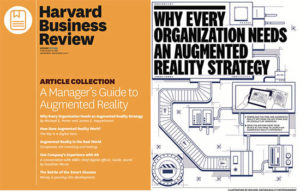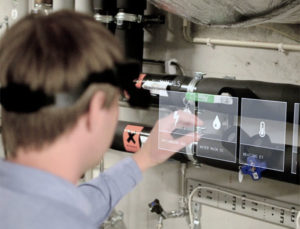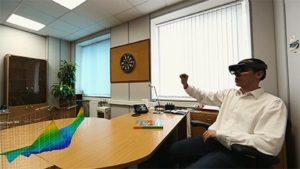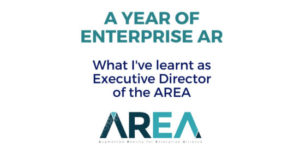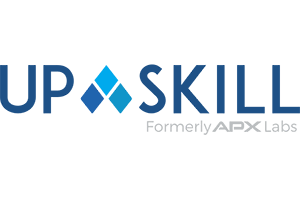Software
Over the past decade, early adopters of enterprise Augmented Reality like Airbus (formerly EADS), Daimler, Volkswagen, Boeing and others invested in internal software development tools and built their own platforms in order to integrate with existing data and business systems, and to manage as many factors as possible without relying on outside vendors.
Today, many who are starting or managing AR projects are still in research and development phases and seek to control variables as much as possible. They may still choose to build a new solution entirely within their IT organizations, but more often are able to license core enablers from commercial providers (at a cost or without fee), or to use open source projects.
As commercial solutions improve and offers expand, companies frequently find themselves needing to carefully re-evaluate the cost of building (or continuing to maintain) a solution internally. In some cases, purchasing off-the-shelf software solutions for experience development is less costly and there are other benefits.
Commercially ready SDKs for enterprise AR have several advantages. They usually benefit from a better user interface for use by developers. There is almost always documentation or webinars for getting new users up to speed and producing experiences quickly. Commercial solutions may also have more investment in core enabling technologies for object recognition, tracking and rendering. Getting these working with a variety of hardware platforms and maintaining those is costly.
The reason that many enterprises are still in the position of building or developing internally has to do with the risks associated with a commercial SDK provider changing strategies, a lack of resources for maintaining R&D, a low commitment to rapid change needed by enterprise customers, a lack of support for the enterprise IT group’s choice of hardware and maintenance costs of software and extensions. Many licenses have to be renewed annually or base a fee on the number of experiences; if the organization uses AR in many projects, the fees may be greater than developing and maintaining an internally engineered SDK.
Hardware
Any AR project requires sensors for detecting user context and intentions, a display system (personal or shared/stationary and attached to a tool or area of the shop floor) for providing experiences and processing for highly demanding computational tasks.
Since positioning the AR experience is so critical to success, many companies develop custom positioning and user detection systems involving infrared, highly calibrated systems that frequently re-use parts or build upon previous Virtual Reality project components.
Depth sensing is highly appropriate in enterprise AR where many targets are three dimensional and the CAD models are as well. Rendering 3D models in real time is highly processor intensive and benefits from storing the models in memory, another costly hardware component if a project exceeds one or two prototypes and begins to be deployed in dozens of positions.
Most enterprise AR projects begin with tablet computers. Tablets are suitable for prototyping but there are several types of obstacles. One has to do with security and safety using systems that are not designed for industrial environments or data access. For example, many IT departments cannot use devices that require connecting to the Apple App Store.
Separately there is ergonomics. To perform many AR-assisted tasks requires both the user’s hands or for the user to move around in a space without cables or obstructions. Here the options expand and many solutions are worthy of exploration before selecting one that will be deployed as an internal standard.
Some groups choose to develop custom hardware (contracted or internally developed) to meet their precise needs rather than purchase commercial products.
Content
In order to design the AR experience, the original content and models may need to be ported or adapted prior to use. In addition to raw data, there is also the user interface that has to be designed and adapted to a project.
Once in use, content must also evolve as the processes change. This can require starting over entirely. There also needs to be processes for data management and to store the data that has been captured by the AR system during use.
In general, project costs for content development are at least as great as for the other two essential components.
Integration
Once a pilot or prototype is proven, there will be a need to integrate AR-assisted components into the larger enterprise workflow. This requires planning and heavy testing to ensure that other components and procedures are stable and are not sacrificed for the purpose of real time data visualization in AR view.
Integration is a cascading problem, often leading to indirect costs such as upgrades to a database, greater data storage capacity, higher throughput networks and other costs to lower the delay and increase system performance.
Policies and Processes
Augmented Reality is likely to require the development of new policies and procedures and the refinement of existing ones. This involves legal staff, risk management, safety and security staff and other groups with responsibilities outside those of the information technology or business line management groups directly involved in introducing AR-assisted systems.
Policy and process changes may require coordination with regulatory bodies and other companies and organizations. These changes can escalate in terms of both cost and the time, and introduce delays in the calculation of return on original investment.
Training
As the rate of technology introduction and process changes increases, so do employee training requirements. Training is not only for those introducing and managing software, hardware and content, but also for those working in evolving workflows. New steps are introduced and old steps are eliminated.
New or changed training means less time to perform mission critical tasks and more administration. As with costs associated with changing policies and procedures, changes in training can escalate quickly.
Although it may not be possible to measure them precisely, training costs associated with introducing AR in an enterprise could add up in unforeseen areas and be delayed due to courseware development and review costs.
Introducing AR is a Long-term Investment
To truly integrate Augmented Reality in an enterprise will be a long-term process and significant investment, probably comparable to the computerization and automation of many enterprise processes over the past 20 years. These costs must be considered in light of the total impacts on the business.
Management will need the support of AR experts and IT groups to take in all the related costs as well as to estimate the risks of not introducing AR in an acceptable time frame on a large scale.
How does your organization calculate the total cost of ownership for introducing new technology? Is AR introduction stalled by unforeseen cost centers?
